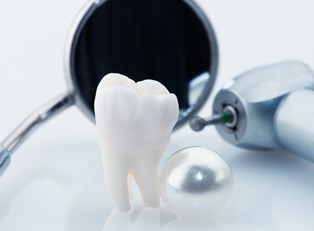Wisdom teeth are a set of molars that develop near the back of both sides of the mouth. These typically do not begin to develop until adolescence or young adulthood; because this is a time when most people start to mature, the teeth were given their wisdom-based nickname.
There are people who may never develop wisdom teeth or have problems during development, but for some, they can cause pain and other dental complications. When this occurs, the teeth will need to be surgically removed. Here is a look at the removal process—including why it happens, how it’s done, and what to do during the recovery process.
Why Wisdom Teeth Are Removed
There are two primary reasons why a dentist may recommend removing a patient’s wisdom teeth: they are currently causing problems or there is a likelihood that they will cause problems sometime in the future.
One of the most frequent reasons why wisdom teeth give patients difficulty is because their jaws are not large enough to accommodate these new molars. When this occurs, wisdom teeth can become impacted, a term that means teeth are unable to break through the gum line. This can potentially lead to pain or infection, although some people are able to deal with impacted wisdom teeth without any problems.
If the wisdom teeth are able to break through the gum line, it may only occur partially, which can also lead to difficulties. Most commonly, this causes a flap of gum tissue to regrow over the teeth. When this occurs, food can become trapped under the flap, and over time this may create an infection.
Finally, wisdom teeth may break through the gum line entirely but grow at an awkward angle. This can place pressure on a patient’s other teeth, which may cause him or her pain and discomfort.
The Wisdom Teeth Removal Process
While removing wisdom teeth requires surgery, it’s typically minor enough that it can be safely performed by a dentist in his or her office. Most commonly, a dentist will numb the affected area with a local anesthetic; however, general anesthesia may be used in order to prevent excess pain if a patient is having multiple wisdom teeth removed.
The process itself begins with the dentist cutting open the gum tissue that is surrounding the wisdom tooth or teeth. Next, he or she will separate the actual tooth from the bone connected to it. If a tooth is particularly large, dividing the tooth into smaller segments for easier removal may be required.
Once the teeth have been separated from the bone and extracted from the mouth, the dentist will close the affected area using stiches. These stiches may dissolve by themselves over time, or they may need to be manually removed at a later date, depending on which method a dentist feels more comfortable using.
Finally, he or she will cover the gum line with gauze to prevent excess bleeding after the surgery.
The Cost of Removal Surgery
The cost for removal surgery will vary depending on a number of factors that include the dentist performing the procedure, the number of wisdom teeth to be removed, the local economy, and whether or not a patient has insurance to cover some or all of the expenses.
There is, however, some information available about typical costs. On average, the extraction itself (including local anesthesia) will cost anywhere from $200 to $600. If patient requires general anesthesia, this will normally increase the total price by $250 to $800.
Recovering from Surgery
While the recovery period following wisdom teeth removal typically only lasts a few days, it can be quite a painful time. For this reason, dentists will prescribe some form of painkiller to help alleviate their patients’ discomfort.
In addition to medication, the use of ice packs on the outside of the cheeks can help numb the affected area and additionally reduce pain. After the first day of recovery, it’s recommended that patients switch to using heat in the form of washcloths soaked in warm water to help quell discomfort.
For the first few days, patients will be unable to eat solid foods, so they should plan to follow a diet comprised of only liquids and soft foods, such as soup or Jell-O. As the pain begins to subside, they can start incorporating more solid foods.



